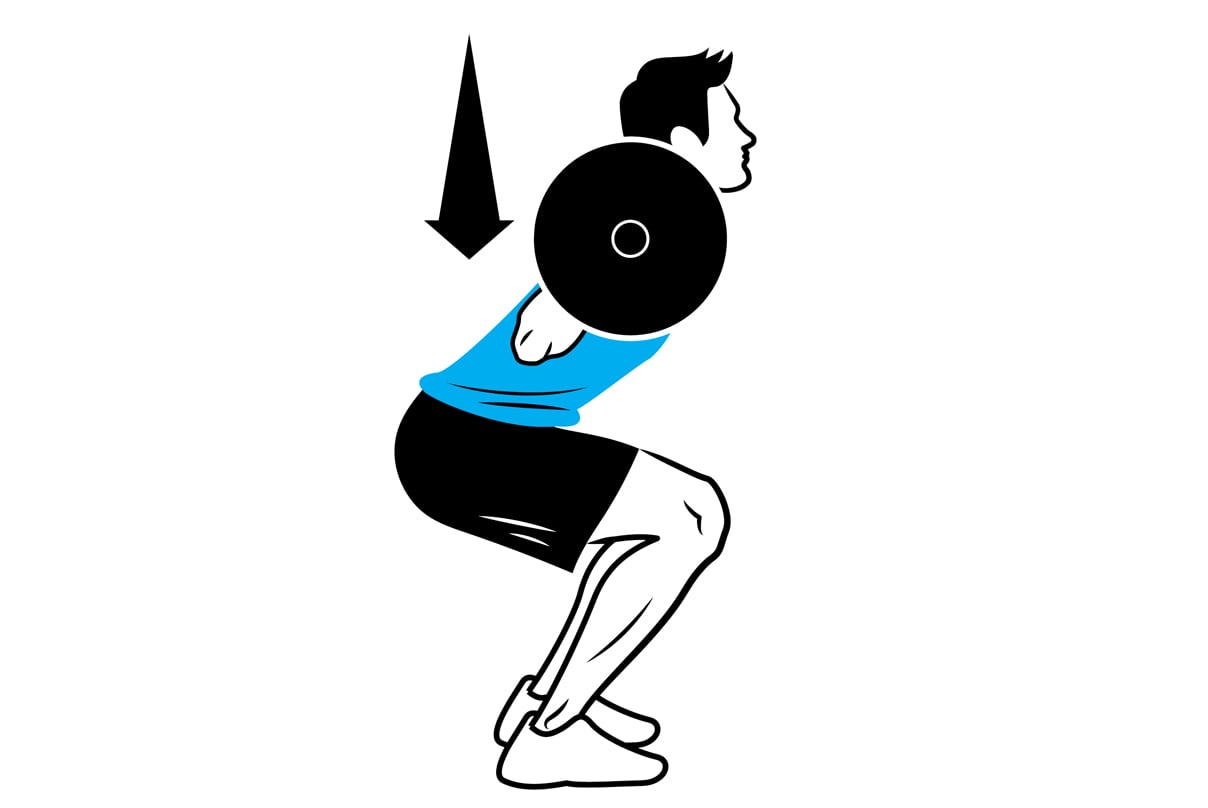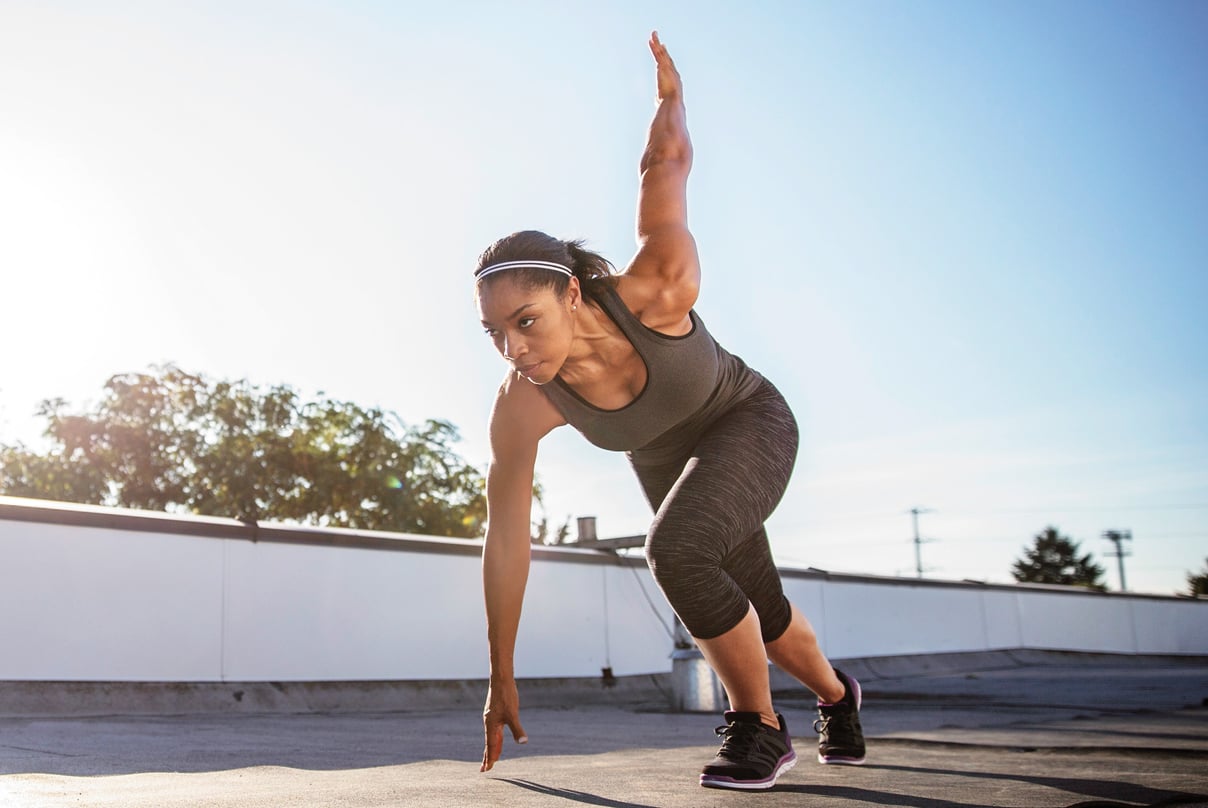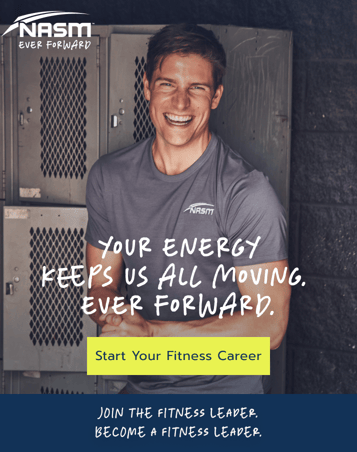Explosive strength is crucial for sports performance It’s all about producing force quickly. We use it to play harder, jump higher … or to keep up with our kids or react to surprises like higher-than-expected curbs in order to avoid a fall.
“Our ability to react to unexpected situations in sports, and in life, is highly influenced by how quickly we can generate force,” says NASM Master Instructor Tony Ambler-Wright, MS, NASM-CPT, CES, PES.
Looking to help your clients develop explosive strength? Ambler-Wright and NASM Master Trainer DeWayne Unger, NASM-CPT, CES, PES, BCS, FNS, GPTS, share PES-based ideas to help.
What They Want Vs. What They Need
Clients won’t come to you asking about preventing a fall. They want to lose weight or be bigger, faster, and stronger. “They want to get right to the meat and potatoes,” Unger says. “But they’re usually not ready.” It’s crucial to convince them that a progressive, systematic approach is required.
Unger does that with an Overhead Squat Assessment, after which he explains any compensations. He then explains his plan, sharing how they’ll build to the work the client wants to do.
Ambler-Wright incorporates plyometrics that give the client the sense that they’re working on power, even when they’re still building up to it. For example, a basketball player might do box jumps with holds. “With the holds, they’re improving deceleration, stabilization, and body control,” he says. “But it’s still jumping, which is what they want to work on.”
If you want to learn more about plyometrics, follow the link for a great resource.
Build the Foundation First
There’s a reason power training is Phase 5 of the Optimum Performance Training™ (OPT™) model: You can’t optimize explosive strength without first improving mobility, neuromuscular control, stability, and strength.
What’s more, explosive strength development should only be a brief part of a client’s overall program. Unger builds year-round periodized programs for his athletes that only incorporate Phase 5 at certain times. For example, a football player might work on corrective exercise and stabilization in January, hit Phase 2 through Phase 4 in the spring, and tackle Phase 5 only in the summer, just before preseason practices start.
Power: Contrast and Compound
When power work begins, base it on contrast training: supersets consisting of high-load resistance exercises followed immediately by biomechanically similar plyometrics. Combining the two brings about post-activation potentiation, as the strength exercise stimulates the nervous system to recruit more motor units, so more muscle fibers are activated during the plyometric exercises.
Studies have shown that this training enhances explosiveness during a session. Over time, the gains lead to longer-term improvements. “You’ll see great adaptations as a result of training this way,” Ambler-Wright says. “We’ve seen it work with a variety of populations at all levels.”
Try This
This superset is for almost anyone who’s ready for Phase 5. Exercises should be back-to-back, without rest, with the first one at 85% to 100% intensity, and the second at 30% to 45% intensity. Do three sets with two to three minutes rest between sets.

Barbell Squat
Stand, feet shoulder-width apart, toes straight ahead, knees over second/third toes. Rest barbell behind neck on shoulders, hands wider than shoulders. Slowly squat, bending knees and flexing hips, maintaining ideal posture. Keep chest up. To rise, contract gluteal muscles and press through heels. Repeat five times.

Squat Jump
Stand with feet pointed straight ahead, shoulder-width apart, hips neutral, knees over mid-foot. Squat slightly as though sitting in a chair, then explosively jump up, raising arms overhead. Land softly with ankles, knees, and hips flexed. Perform eight to 10 quick and controlled reps.
Get Your PES
Important information about NASM’s Performance Enhancement Specialization (PES).
What it is: PES provides the concepts and knowledge to build individualized, sport-specific training programs to give athletes a richer training experience and better sports performance, from youth to professional athletes, teams, and weekend warriors.
Who it’s for: Anybody who wants to help athletes get to the next level—and take their career there too.
What it takes: PES candidates have one year to complete the course and pass an online exam. NASM provides multiple resources for learning, including a textbook, online lectures, study guides, quizzes, and a practice exam, plus the Cardio for Performance online course. A hands-on workshop is also available.
Benefits for your business: Almost every client wants to get bigger (or leaner), stronger and faster, and when you can help them, you’ll get—and retain—more clients. “PES addresses all of the major components of a power program, and how to get someone ready for it,” says NASM Master Instructor Tony Ambler-Wright, MS, NASM-CPT, CES, PES. “It’s organized into a systematic, progressive approach that you can customize and apply to anybody looking to improve performance.”
















